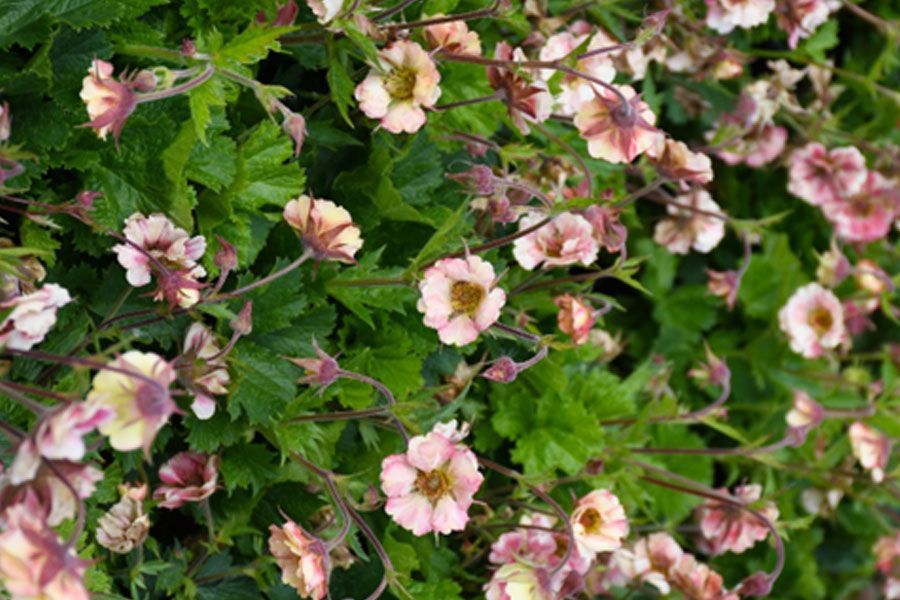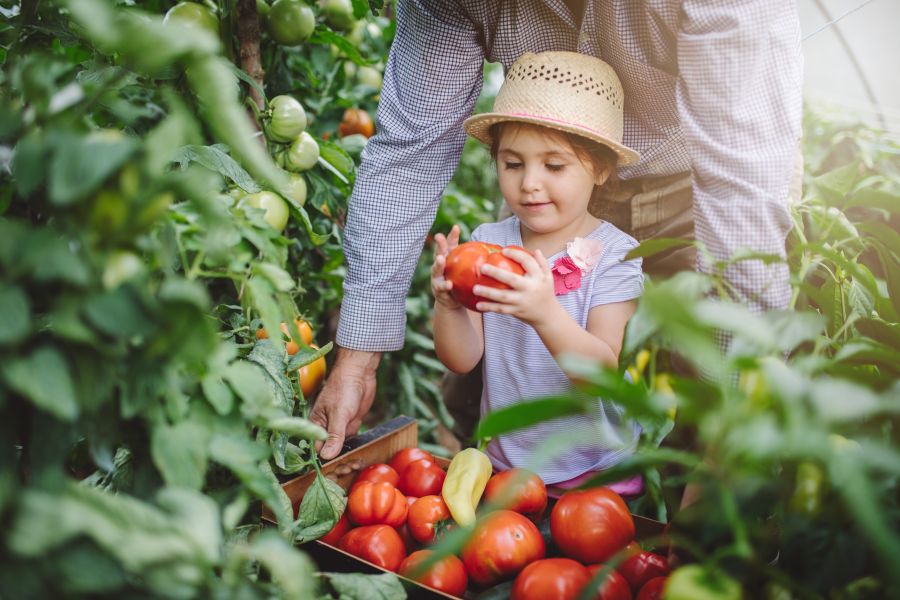There’s nothing like a home-grown tomato! Pick it, pop it in your mouth and savor that fresh flavor. Our Minnesota climate makes it a bit more challenging, but we don’t give up and that’s why, every year, we receive a lot of questions that start with, “What’s wrong with my tomatoes?” All America Selections created this list, which we have tweaked a bit to match our weather challenges:

1. Blossom End Rot (BER): Often found on the first fruits of the season, it’s that dark, sunken formation at the blossom end.
It’s a lack of calcium. However, that doesn’t necessarily mean that there isn’t enough calcium in the soil. It’s likely that the plant’s ability for calcium uptake is impaired. Drought stress and inconsistent watering cause root hair damage. Waterlogged soil, cold soil, high concentrations of ammonium, potassium and magnesium in the soil can all lead to BER.
Solutions include:
*Test your soil before planting. The Gertens Soil Test is comprehensive. If a soil test shows low calcium levels, add garden lime, bonemeal, or finely crushed eggshells (the smaller the particles, the better) to the soil. If it does not show low calcium levels, don’t add any!
*Check the soil pH. Most vegetables and fruit, including tomatoes, prefer a pH around 6.5. For a quick pH test only, the Luster Leaf Rapitest is sufficient.
*Avoid planting tomatoes too early (especially here in Minnesota). Cold, wet soil can damage the roots and root hairs that lead to BER.
*Do not over-fertilize. Tomatoes are heavy feeders, but you need to follow instructions on fertilizer labels and avoid too much nitrogen. We recommend Tomato Tone for the best results.
*Irrigate plants evenly. Tomatoes like consistently moist, not soggy, soil.

2. Blossom drop: Flower stems turn yellow; the flowers then dry up and fall off.
This issue is typically due to extreme temperatures. Either too hot or too cold. Something we know about in Minnesota! When nighttime temperatures drop to 55, the plants are stressed and that can also lead to Blossom drop. High and low humidity can also lead to this issue.
Solutions include:
*Wait to plant tomatoes until nighttime temperatures remain above 55.
*If the temperatures remain consistent in the 90’s, cover your tomatoes with a shade cloth. Generally, this isn’t a problem in Minnesota, but climate change is playing a role in our recent high temperatures.
*Select a fertilizer specifically for tomatoes. We recommend Espoma Organic Tomato!

3. Cracked fruit: These are the concentric cracks that appear in a circle around the stem-end of the tomato and the radial cracks. It’s mostly cosmetic, but diseases can develop in those open cracks.
Uneven moisture is the prime reason for tomato cracking, particularly during rapid growth.
Solutions include:
*Water consistently.
*Mulch your tomatoes to retain moisture. Dried leaves, your cut back perennial grasses, or any other organic mulch. Don’t use dyed mulches. We recommend Pine Straw Mulch.
*Reduce watering as tomatoes near ripeness.
*Pick nearly ripe tomatoes early if heavy rain is forecasted. Allow them to fully ripen in a sunny window. While this may “feel” wrong, it’s “right”!

4. Sunscald: white or yellow blisters form on the fruit facing the sun. Typically, this happens when the fruit is green. Black mold can grow on the area, causing the fruit to rot.
Too much sun can burn! Just like gardeners.
Solutions include:
*Maintain healthy plants with consistent watering. Drip irrigation is the best to keep water from splashing up onto the foliage.
*Mulch your tomatoes. Dried leaves, your cut back perennial grasses, or any other organic mulch. Don’t use dyed mulches. We recommend Pine Straw Mulch.
*Practice crop rotation.
*Cover fruit with a shade cloth.
5. Poor Fruit Set: Plants produce few to no tomatoes. Blossom drop, very high or low humidity levels and too much nitrogen can all cause poor fruit set. It most often occurs on large-fruited heirloom varieties.
Solutions include:
*Follow the instructions regarding Blossom drop.
*Stagger your tomato plantings.
*Test your soil for excessive nitrogen. Here’s a reminder of NPK – N is for nitrogen(foliage), P is for Phosphorus (root growth & fruit and flower set) and K – potassium (very basically, it’s for overall plant health – helping to move water and nutrients through the plant).
*Tomato Tone is Gertens recommended fertilizer.

6. Cat-facing: Brown creases and folds that form on the blossom end of the fruit. While unattractive, it’s still edible.
Extended periods of cool daytime temps (60 to 65 degrees) and nighttime temperatures (50 to 60) can cause abnormal development of the plant tissue between the style and ovary. Thrips and soil that has too much nitrogen can all lead to cat-facing.
Solutions include:
*Plant when temperatures are warm.
*Avoid aggressive pruning.
*Test for excessive nitrogen.
*Plant smaller varieties as the large fruits are the ones most affected.

7. Yellow, spotty, wilted foliage: Lower leaves turn yellow or overall wilting & yellowing of the foliage.
There are several reasons for this unfortunate condition. Often frustrating because you can’t see the culprits, fungal, bacterial, or viral infections. Early blight, leaf spot, bacterial canker, bacterial pith necrosis, or verticillium or fusarium wilt are some of the nasty nemeses that can wreak havoc.
Solutions include:
*If it’s mostly the leaves on the bottom; remove and destroy the leaves. Do not compost.
*If it travels upward quickly, remove the entire plant and throw it away. Again, do NOT compost. *Mulch your plants. Remember organic mulches with no dyes are best. We recommend Pine Straw Mulch.
*Rotate your crops.
*Disinfect/wash your containers, supports and tools. The University of Minnesota recommends Lysol All-Purpose Cleaner. Be sure to rinse well. While a 10% bleach solution is cheap and efficient, it’s best used in an open area and for large hand tools. Do not pour the unused solution into your garden.
*Select disease resistant varieties. Talk with Gertens experts!

8. Dark spots on tomatoes: Ripe fruit develops ugly, sunken brown or black spots.
This one is caused by a nasty pathogen, anthracnose. It lurks in your soil with its spores splashing onto the plants. Infection is more likely when it’s warm (temps over 80). It starts as a small, depressed area which grows larger over time and darker as the fungus produces spore-containing structures.
Solutions include:
*Trellis tomatoes to avoid soil splashing up.
*Use drip irrigation.
*Mulch your plants. (Read above for our mulch recommendations)
*Pick affected fruit immediately.
*Don’t grow tomatoes, peppers or eggplants in the affected area for 3 years. *Apply fungicides to prevent the spread to other plants. Captain Jack’s Neem Oil is a suggested product from Gertens.

9. Leaf roll: Tomato leaves curl up or down.
Again, another tricky issue to diagnose as it could be physiological, viral or herbicide damage. Let’s start with physiological: excess moisture, too much N, not enough P, heat, drought, early planting... you get the picture! Viral issues such as Tomato yellow leaf; caused by whiteflies and Tomato Mosaic; which causes internal browning of the fruit and herbicide damage; leaves will roll downward and is caused by overspray.
Solutions include:
*For physiological damage: test the soil for excessive nitrogen and amend accordingly. Good drainage, watering consistently, avoid severe pruning, plant when temps are warm and harden off seedlings before planting.
*For viral issues, there is no fix: remove surrounding weeds which may host insects that transmit the disease. Remove and dispose of the entire plant. Do NOT compost.
*Herbicide damage cannot be reversed. If the damage is minimal, remove the dead portions of the plant and look for new growth. If excessive damage has occurred, there is no hope. The best approach is to protect your plants by not using an herbicide anywhere near them.

10. Nibbled fruit: Somebody nibbled on the fruit, and it was not a human!
Deer, birds, tomato hornworms, tomato fruit worms, slugs, snails, raccoons, opossums…so many culprits.
Solutions include:
*Check plants daily for eggs and pests, then remove them.
*Invite beneficial insects with companion plants such as basil, nasturtium, parsley, marigolds, chives and borage, an annual herb.
*Use IPM, aka Integrated Pest Management. This method encourages predatory insects such as parasitic wasps. They use tomato hornworms as hosts for the eggs, effectively killing them as the larva hatches. Talk with our experts if you’re unfamiliar with IPM.
*If you have deer, your best option is a tall fence. About 7 ft or more. An electric fence could work but this may not be practical for a variety of reasons, including safety for humans.
*Motion activated sprinklers will discourage mammals and birds.
*Apply repellent products for rabbits and other mammals such as Plantskydd, Repels All. These come in sprays or granules. They are organic and will not harm you, kids, or pets













